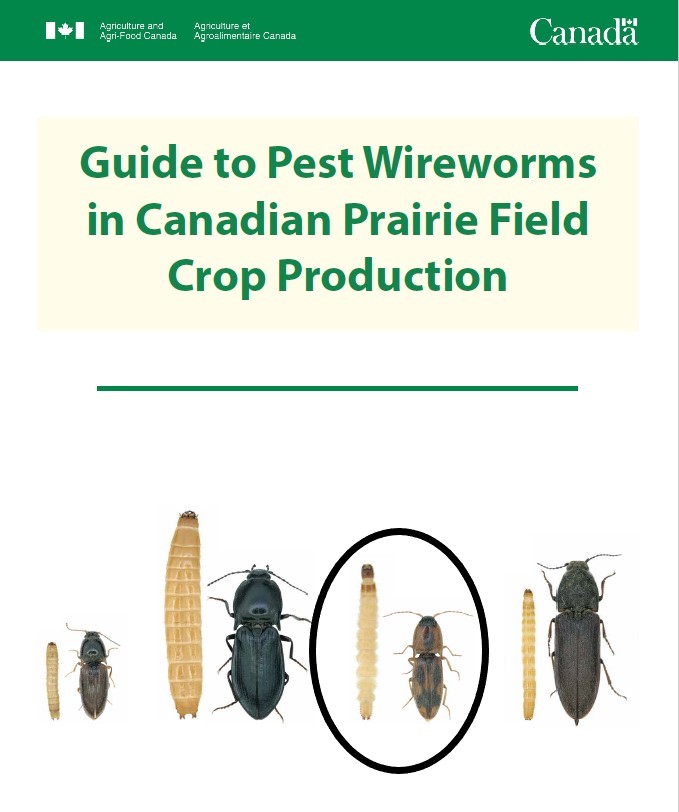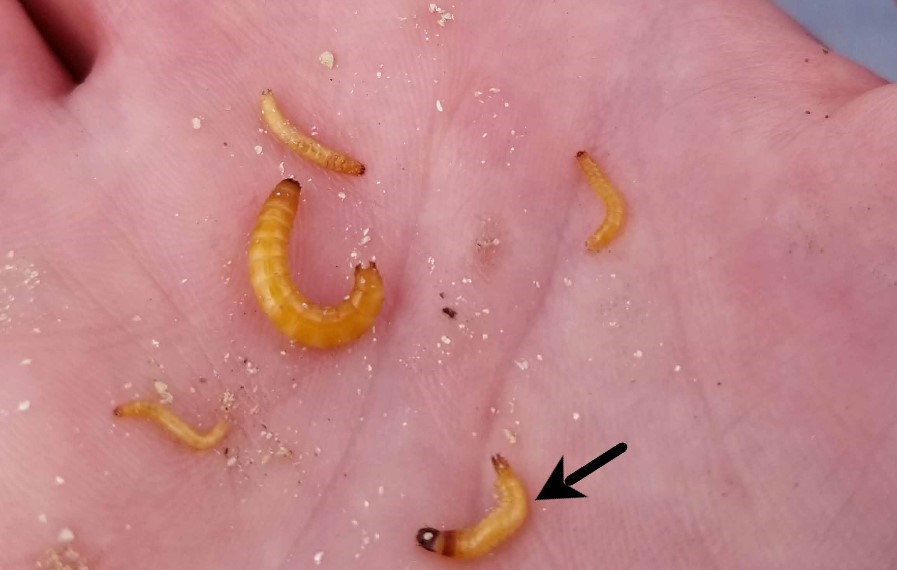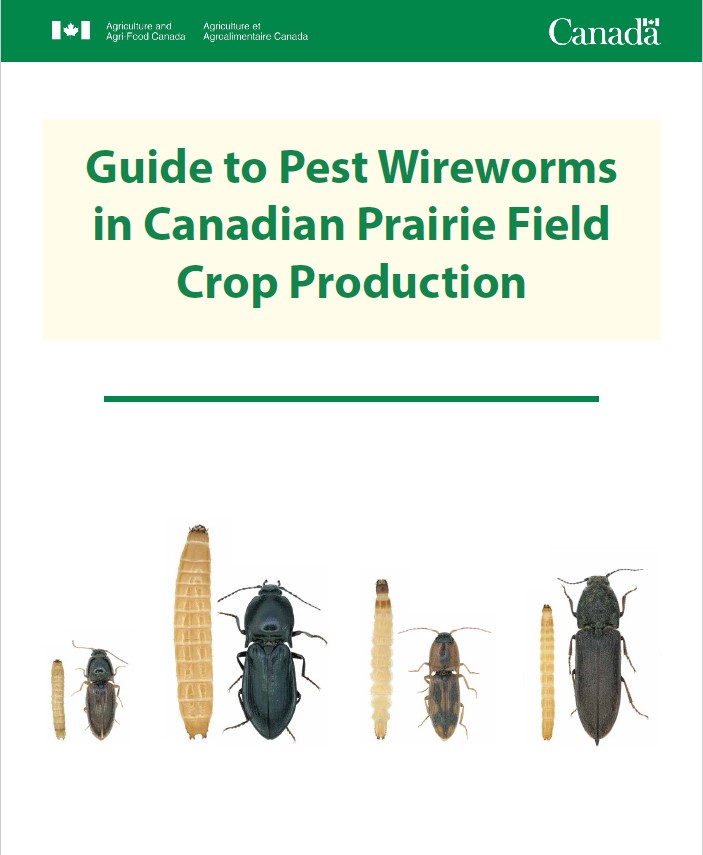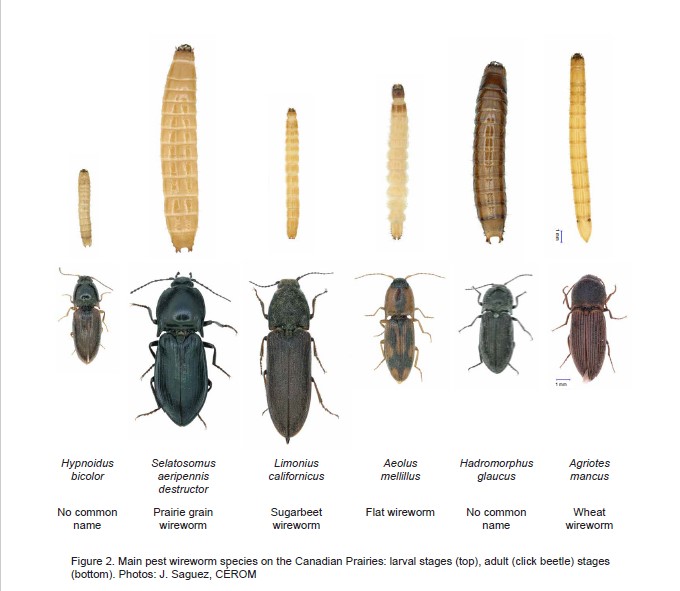This week wraps up our series on Prairie wireworms, and we are ending with a bit of an odd one, the flat wireworm (Aeolus mellillus).

The flat wireworm is not found in huge abundance on the Prairies, but it is worth knowing about because it’s different than the other 3 main species. First, it is quite recognizable with its dark reddish-brown head and stripe below its head.

Second, if you ever get one of these in the palm of your hand, it is very active, it will be hard to hold on to it before it crawls away. This activity may be because the flat wireworm is also a predacious species, in fact it might eat other wireworms! But it also eats plants, and the literature says it cuts plants rather than the shredding type of feeding shown by other species. The flat wireworm can grow fast to its mature size of 15 mm. Unlike other wireworm species, Aeolus mellillus has a short 1-2 year life cycle and can pupate anytime between spring and late summer. This species also does not need to mate to reproduce – as far as we know, Canadian populations of A. mellillus are all females!
AAFC has recently released a new field guide on Prairie pest wireworms. It has information on biology, monitoring and management and research on wireworms on the Prairies. Preview pages extracted from the guide highlighting Aeolus mellillus by clicking here.
Free digital copies in both official languages can be downloaded at these links.
Free hard copies are also available while supplies last. Email Haley Catton at haley.catton@agr.gc.ca to request your copy.


Did you know?
This species occurs from BC to Nova Scotia but may be made up of separate subspecies.
